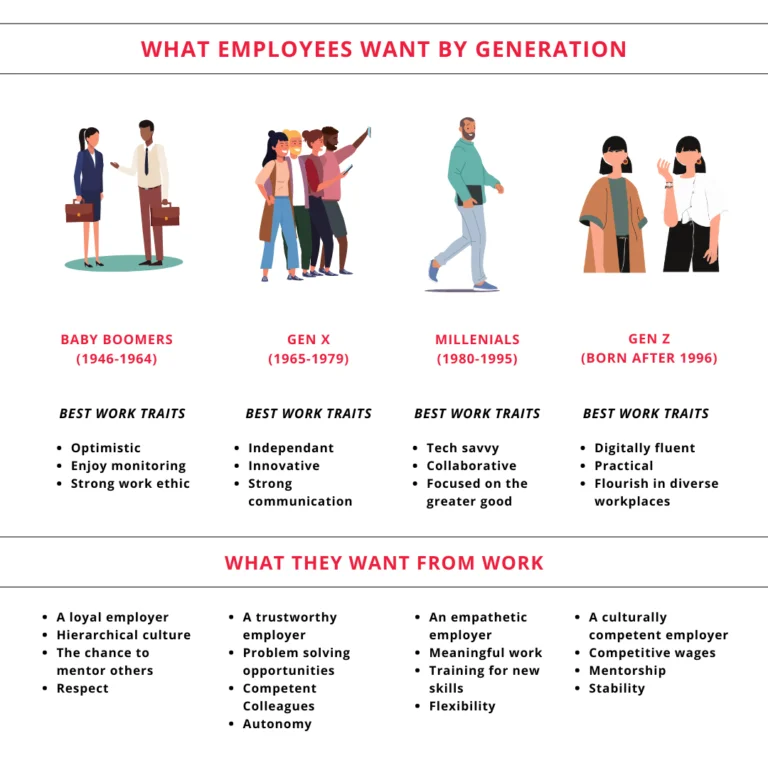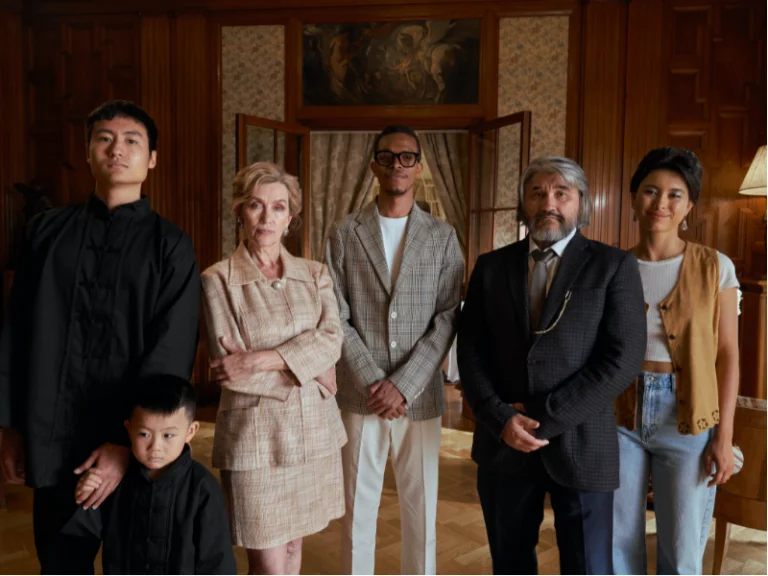Blog
The Generation Game in the Workplaces

Empathy, Ethics, Equality
Walking into any corporation or company in this day and age, you’re bound to see something that’s never been witnessed in any other era.
For the first time in history five generations are actively in the workforce. The Silent Generation, Baby Boomers, Generation-X, Millennials and Generation-Z bring different mindsets and expectations to the office.
You’ll see the company director hunched over their morning coffee, maybe having clocked into work after dropping the grandkids to kindy. They’re likely to be looking over files and signing off on paperwork, adjusting a pair of glasses on the bridge of their nose as they check the clock wondering when the team will stroll in.
And on the other hand, you’ll see the newest recruit, Starbucks in hand, skipping through their iPad, starting off their work day by looking up the newest advertising trends on their Tiktok, and sharing exotic tales of a week working from a co-working space in Byron.
Five generations working alongside each other.
Learning and navigating a generation gap that in many cases is a huge unknown.
The Generation Gap

In the age of advanced medical science and all the other cool stuff and new discoveries that are making the word “impossible” seem almost obsolete, it’s no surprise that the world population is continuing to grow, along with individual life expectancies.
The seven living generations are:
- The Greatest Generation (born 1901 to 1927)
- The Silent Generation (born 1928 to 1945)
- Baby boomers (born 1946 to 1964)
- Generation X (born 1965 to 1980)
- Generation Y, aka ‘Millennials’ (born 1981 to 1995)
- Generation Z (born 1996 to 2010)
- Generation alpha (born 2011 to 2025)
Between the first of these generations and the last, we’ve got a time span numbering over a hundred years! Every generation has lived through history as it was being made- wars and nuclear bombs development, the invention of the smartphone, the beginning and the progress of the Global Age, pandemics and tsunamis and revolutions and the rise and fall of dictatorships.
And every generation has dealt with them differently.The generations that lived through some of these events will have a different story to tell, and the generation that reads about them and only knows of these events through secondhand retellings will form their own opinions around it, while they write what will become their own history to be critiqued by the generations to come.
So, while we may have seven generations living alongside each other right now, it isn’t necessarily a peaceful coexistence!
Each generation has their own priorities and values built around the teachings of their times, and with bigger generation gaps it’s becoming harder to reconcile between these differences and get along. This is especially true for workplaces where there are a maximum of five generations working alongside each other, in this day and age where people can choose to stay in the workforce for longer thanks to increased health facilities and life expectancies.
With Gen X and Baby Boomers taking up most of the senior positions in corporations and companies while their employees constitute mostly of Millennials and Gen Z, companies are struggling to bridge the generation gap between these two groups and create a workplace culture where everyone thrives.
The War in the Workplace
Millennials now make up about 35 per cent of workplaces, and that number is growing – it is expected to be 75 per cent by 2030. But studies are already showing that 43 per cent of millennials envision leaving their jobs within two years of being hired, and only 28 per cent seek to stay beyond five years.
Some of my clients who belong to the Gen X and Baby Boomer generations struggle to accommodate the millennials and Gen Z’s in their workplace. Reaching out and asking for help.
They tend to have preconceived notions and prejudices about these two generations, insisting that they are overly privileged, they have no work ethic, they are not prepared to put in the hours to get ahead, they have little respect for authority, and they refuse to reach an expected level of maturity.
In truth, millennials have cultivated a new age of empathy, ethics, and equality— three tenets on which they have also largely based their priorities and their values on.
Their increased access to technology and the internet means they participate in and instigate movements that make a difference, for example, #MeToo, BLM and March4Justice. They understand that they no longer need to put up with toxic behaviours, whether in the workplace or otherwise. Moreover, with the workplace market being broader than ever, they have the option of quitting jobs where they are experiencing toxicity, whether it is in the form of bullying disguised as damaging banter, or workplace harassment.
From research for my book, Millennials want to work in places where they feel seen and heard and valued. Millennials want to feel like their work is making a difference. They want to make a tangible impact, rather than just collect their wages at the end of every month sitting through a 9-5 desk job.
They are purpose-driven, enjoy self-guided work, believe in feedback and trust from leaders, and place a much higher value on integrity and ethics in the workplace than previous generations.
I call them the ‘Upstander Generation’. Because they are standing up for themselves and for their colleagues, they are challenging the status quo, and demanding the respect that is due to them.
They are the future, and companies and corporations need to learn how to harness their potential and their passion, instead of driving them away with a toxic workplace culture on the basis of “That’s how it’s always been done”.
Make Way for the Upstander Generation!

The Upstander Generation is the most significant generation since the baby boomers – they are driving the future of business and creating a new working environment for Gen Z, Gen Alpha and so on.
This is why companies and industries need to invest in retaining this generation within their workplaces. The pathway to this is in understanding the goals and values of the Upstander Generation, and in using this knowledge to create a workplace culture where everyone thrives.
Especially industries that have massive skill shortages, and toxic outdated mindsets and behaviours
The first step in driving this cultural reset is by asking some important questions regarding your company’s policies and principles. I’ve compiled a handy checklist for you to help assess where your company stands with regard to a proper workplace culture, so you can go ahead and access it here!
Bridging the generation gap and getting rid of beliefs that don’t serve your company is integral to initiating the cultural reset.
Since we’re reaching the halfway point of the year, it’s a great time to reassess your budget and make sure you’re investing in your middle managers.
An strong People and Culture team ensures that employees’ rights are not being breached in any way, and the presence of an HR department that safeguards employees’ rights and dignity, is a must in creating an upstander culture in your workplace.
Companies need to focus on setting aside outdated systems of management, on reassessing their workplace values to accommodate all employees, on creating a workplace culture that can make way for the Upstander Generation to release their full potential, and thrive in an environment that harnesses their passion for positive change!
For more information on how to nurture and reset your workplace culture check out www.jesshickman.com

